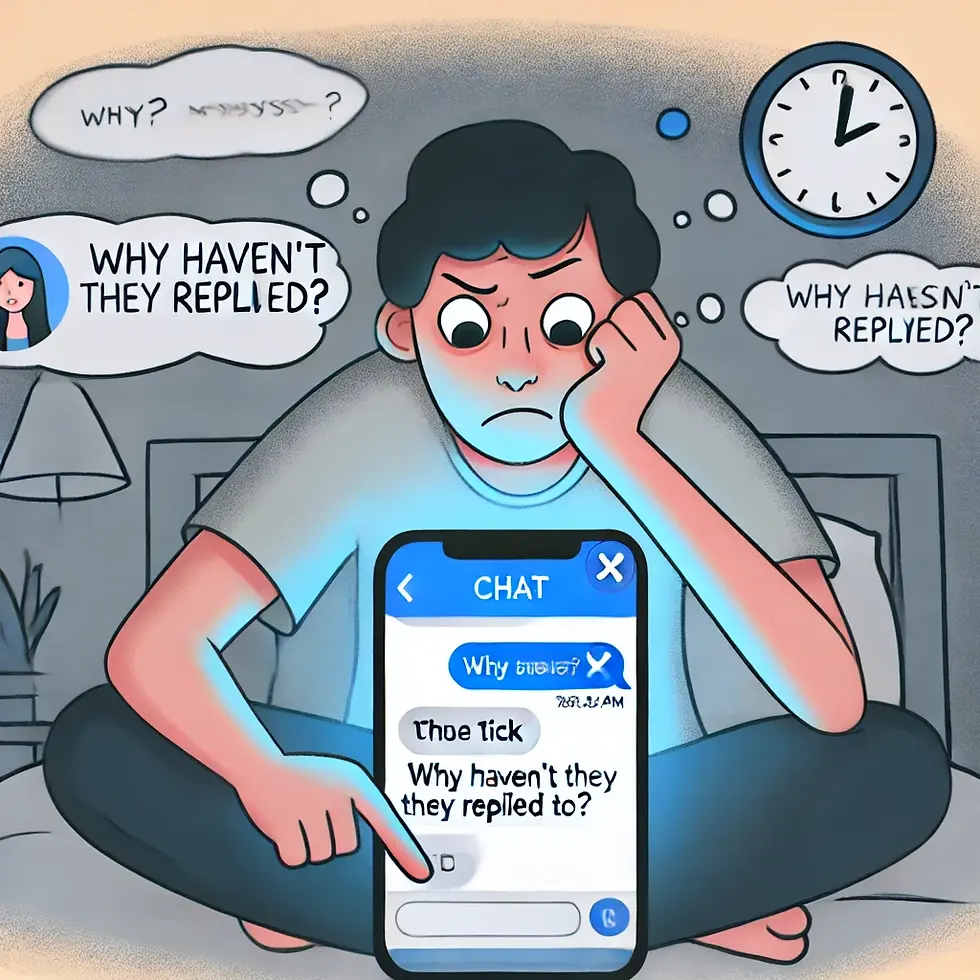Obsessive-Compulsive Disorder (OCD) as per the DSM-5 is characterized by the presence of obsessions, compulsions, or both. Obsessions are recurrent, persistent thoughts, urges, or images that are experienced as intrusive and unwanted, often causing significant anxiety or distress. Compulsions are repetitive behaviors or mental acts that an individual feels driven to perform in response to an obsession or according to rules that must be applied rigidly.
Explaining OCD in brief:
DSM-5 Criteria for OCD:
1. Presence of Obsessions, Compulsions, or Both:
- Obsessions are defined by (1) and (2):
- Recurrent and persistent thoughts, urges, or images that are intrusive and unwanted.
- The individual tries to ignore or suppress these thoughts or neutralize them with some other thought or action.
- Compulsions are defined by (1) and (2):
- Repetitive behaviors (e.g., handwashing, checking) or mental acts (e.g., praying, counting) that the individual feels driven to perform.
- The behaviors or mental acts are aimed at preventing or reducing anxiety or distress or preventing some dreaded event or situation.
2. The Obsessions or Compulsions are time-consuming (e.g., taking more than 1 hour per day) or cause clinically significant distress or impairment in social, occupational, or other important areas of functioning.
3. The obsessive-compulsive symptoms are not attributable to the physiological effects of a substance (e.g., a drug of abuse, medication) or another medical condition.
4. The disturbance is not better explained by the symptoms of another mental disorder (e.g., excessive worries in generalized anxiety disorder).
Symptoms of OCD:
- Obsessions: Fear of contamination, unwanted aggressive thoughts, forbidden sexual or religious thoughts, symmetry concerns, or harming others.
- Compulsions: Washing, cleaning, checking, repeating actions, counting, or arranging things in a specific way.
Causes and Etiology:
- Biological Factors: There may be a genetic predisposition to OCD. Studies suggest abnormalities in brain areas such as the orbitofrontal cortex, caudate nucleus, and thalamus, and neurotransmitters like serotonin may be involved.
- Psychological Factors: Cognitive-behavioral theories suggest that OCD results from faulty beliefs or interpretations of intrusive thoughts (e.g., overestimating danger or responsibility).
- Environmental Factors: Traumatic or stressful events can trigger the onset of OCD, particularly in individuals who are genetically predisposed to it.

Treatment of OCD:
1. Cognitive Behavioral Therapy (CBT): Exposure and Response Prevention (ERP) is the most effective form of CBT for OCD. This involves gradual exposure to feared thoughts or situations and preventing the compulsive behavior.
2. Medication: Selective Serotonin Reuptake Inhibitors (SSRIs) are commonly used to treat OCD. They help reduce the symptoms by altering serotonin levels in the brain.
3. Other Treatments:
- Mindfulness and relaxation techniques can help in managing anxiety.
- Family therapy may be useful, especially when OCD is affecting relationships.
*This information is for educational purposes only. To get diagnosis go to a licensed clinician or a psychiatrist.

ઓબ્સેસિવ-કમ્પલસિવ ડિસઓર્ડર (OCD)DSM-5 અનુસાર OCDની વ્યાખ્યા:DSM-5 મુજબ, ઓબ્સેસિવ-કમ્પલસિવ ડિસઓર્ડર (OCD) એ ઓબ્સેશન, કમ્પલેશન અથવા બન્નેની હાજરીથી ઓળખાય છે.
ઓબ્સેશન: ફરીથી થનારા અને કાયમી વિચાર, ઈચ્છાઓ અથવા છબીઓ છે જે ઘૂસણખોર અને અનિચ્છનીય લાગણીકારક હોય છે, અને જે ઘભરાટ અથવા તણાવને કારણે થાય છે.
કમ્પલશન: પુનરાવર્તિત પ્રવૃત્તિઓ અથવા માનસિક ક્રિયાઓ છે જે વ્યક્તિઓ ઓબ્સેશનથી બચવા માટે અથવા નિયમોના અનુસાર કરવા મજબૂર થાય છે.
DSM-5 માટે OCDના માપદંડો:
ઓબ્સેશન, કમ્પલશન અથવા બન્નેની હાજરી:
ઓબ્સેશનની વ્યાખ્યા:
ફરીથી થનારા વિચારો, ઈચ્છાઓ અથવા છબીઓ જે ઘૂસણખોર અને અનિચ્છનીય લાગે છે.
વ્યક્તિ આ વિચારોને અવગણવા અથવા દબાવવા અથવા અન્ય વિચાર કે ક્રિયા દ્વારા તટસ્થ કરવાની કોશિશ કરે છે.
કમ્પલશનની વ્યાખ્યા:
પુનરાવર્તિત પ્રવૃત્તિઓ (જેમ કે હાથે ધોવાં, ચેક કરવું) અથવા માનસિક પ્રવૃત્તિઓ (જેમ કે પ્રાર્થના કરવી, ગણવું) જે વ્યક્તિને કરવું જરૂરી લાગે છે.
આ પ્રવૃત્તિઓનો ઉદ્દેશ ઘભરાટ ઘટાડવાનો અથવા અપલક્ષિત ઘટનાઓ અટકાવવાનો હોય છે.
ઓબ્સેશન અથવા કમ્પલશન સમયખોર હોય છે (દિવસના 1 કલાકથી વધુ લે છે) અથવા સામાજિક, વ્યવસાયિક કે જીવનના અન્ય ક્ષેત્રોમાં નોંધપાત્ર તણાવ અથવા કાર્યક્ષમતાના ખોરવાને કારણ બને છે.
લક્ષણો કોઈ પદાર્થ (ડ્રગ અથવા દવા) અથવા અન્ય શારીરિક સ્થિતિના શારીરિક પરિણામોથી થતી નથી.
આ ઉલઝનને અન્ય માનસિક ડિસઓર્ડરના લક્ષણોથી સમજી શકાય નહીં (જેમ કે જનરલાઇઝડ એન્ઝાયટી ડિસઓર્ડર).
OCDના લક્ષણો:
ઓબ્સેશન: સંક્રમણનો ડર, આક્રમક વિચારો, વિમોચિત ધર્મ અથવા જાતીય વિચારો, સિમેટ્રી માટે ચિંતા, અથવા અન્યને નુકસાન પહોંચાડવાનો ડર.
કમ્પલશન: ધોવાં, સાફ કરવું, ચેક કરવું, ક્રિયાઓ પુનરાવર્તિત કરવી, ગણવું, અથવા વસ્તુઓને ચોક્કસ રીતે ગોઠવવી.
OCDના કારણો અને ઉત્પાદન:
જીવવિજ્ઞાનિક કારણો:
OCD માટે જિનેટિક પ્રિડિસ્પોઝિશન હોઈ શકે છે.
બ્રેનના વિસ્તારો જેમ કે ઓર્બિટોફ્રન્ટલ કોર્ટેક્સ, કોડેટ ન્યુક્લિયસ, અને થેલામસમાં અસામાન્યતાઓ સાથે જોડાયેલું છે.
સેરોટોનિન જેવા ન્યુરોટ્રાન્સમિટર્સની ભૂમિકા હોઈ શકે છે.
મનોવિજ્ઞાનિક કારણો:
કોગ્નિટિવ-બિહેવિયોરલ થિયરી સૂચવે છે કે OCD ખોટી માન્યતાઓ અથવા વિચારોની ખોટી રીતે સમજાણું પરિણામ હોઈ શકે છે.
પર્યાવરણ આધારિત કારણો:
ટ્રોમેટિક અથવા તણાવભર્યા ઘટનાક્રમ જિનેટિક પ્રિડિસ્પોઝિશન ધરાવતી વ્યક્તિઓમાં OCDને પ્રેરિત કરી શકે છે.
OCD માટે સારવાર:
કોગ્નિટિવ બિહેવિયોરલ થેરાપી (CBT):
એક્સ્પોઝર અને રિસ્પોન્સ પ્રિવેન્શન (ERP) OCD માટે સૌથી અસરકારક છે.
આ સારવારમાં ડર લાગતાં વિચાર અથવા પરિસ્થિતિઓનો નરમાઇથી સામનો કરવો અને કમ્પલશનને અટકાવવું શામેલ છે.
દવાઓ:
સિલેક્ટિવ સેરોટોનિન રિઅપટેક ઇનહિબિટર્સ (SSRIs) સામાન્ય રીતે OCD માટે વપરાય છે.
આ દવાઓ સેરોટોનિન સ્તર બદલવાથી લક્ષણો ઘટાડે છે.
અન્ય સારવાર:
માઇન્ડફુલનેસ અને રિલેક્ષેશન ટેકનિક્સ તણાવ સંભાળવામાં મદદરૂપ થઈ શકે છે.
OCDથી સંબંધોમાં અસર થાય ત્યારે પરિવાર થેરાપી પણ ઉપયોગી હોઈ શકે છે.
આ માહિતી શૈક્ષણિક હેતુ માટે છે. ડાયગ્નોસિસ માટે લાઇસન્સ ધરાવતા ક્લિનિશિયન અથવા મનોચિકિત્સકની સલાહ લો.

Commenti